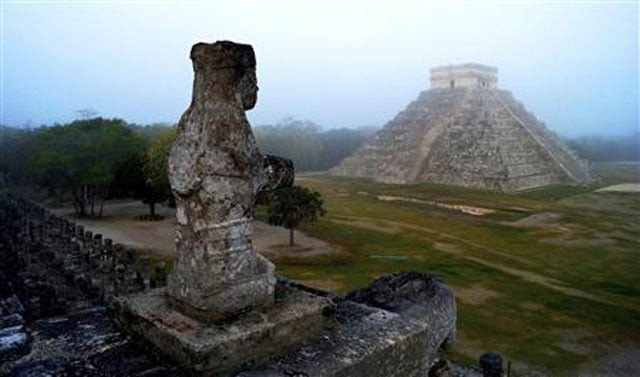Canal found under Maya pyramid: Gateway to afterlife?
The underground network of canals have different levels and were built well before the pyramid

The Maya temple of Kukulkan, the feathered serpent and Mayan snake deity, is seen at the archaeological site of Chichen Itza. PHOTO: REUTERS
The hydraulic system was found under the Temple of the Inscriptions, which houses the seventh-century tomb of Pakal "The Great" in Palenque, the ancient Maya city in southern Chiapas state, the National Anthropology and History Institute announced Monday.
Ancient archaeological sites victim of neglect
"The presence of these canals is very important and very significant," said Arnoldo Gonzalez, the directory of archeology in Palenque.
An inscription in the tomb says that to be accepted in the underworld, the dead must be submerged in the water of a god called Chaac.
The underground network of canals has different levels and goes in different directions, and it was built "well before" the pyramid, according to the national anthropology institute.
Water was still running through the main canal when it was discovered, suggesting that its source is a natural spring.
But archeologists have been unable to determine the length of the tunnel or where it begins.
Gonzalez did not rule out the possibility that the canals were part of a drainage or water supply system.
Ganish settlement lying in wait to reveal secrets
"We must also consider that the ancient Palenque residents designed the hydraulic system to metaphorically reproduce the path that led K'nich Janaab' Pakal to the waters of the underworld," Gonzalez said.
The canal system was discovered with sonars. Archeologists initially thought it could have been a fault line but cameras mounted on small vehicles confirmed the existence of the system, which was built with large stones.



















COMMENTS
Comments are moderated and generally will be posted if they are on-topic and not abusive.
For more information, please see our Comments FAQ